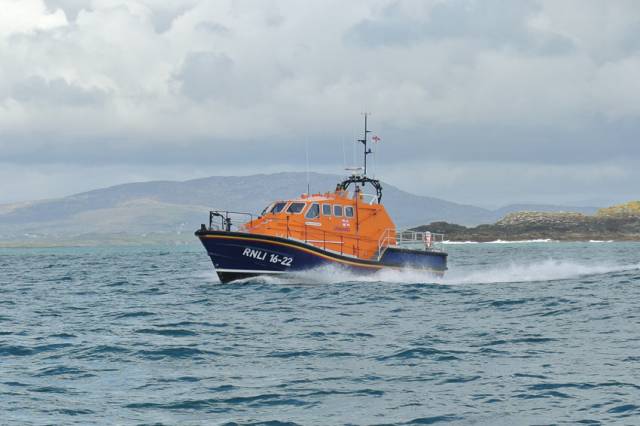#RNLI - Baltimore RNLI has praised the swift actions of one of its volunteer crew members in the rescue a man taken ill on a passenger vessel in West Cork yesterday afternoon (Friday 25 May).
In the first of two callouts yesterday, the all-weather lifeboat was requested to launch at 12.50pm following a report of man in difficulty on a small passenger vessel west of The Stags.
Weather conditions at the time were described as slightly choppy with a Force 3 easterly wind.
The skipper of the passenger vessel, a long-serving volunteer crew member with Baltimore RNLI, had immediately administered casualty care to the man when he started to show signs of being in difficulty, and the man was already in the recovery position as the lifeboat arrived minutes later.
Once on scene, the casualty was transferred onto the lifeboat where the crew continued to administer casualty care as he was brought back to Baltimore.
The man was then transferred into the care of paramedics and a waiting ambulance before he was brought to hospital for further treatment. Volunteer crew member Sean McCarthy provided assistance at Baltimore Lifeboat Station.
“All at Baltimore RNLI would like to wish this man a full and speedy recovery following his ordeal,” said Tom Bushe, Baltimore RNLI lifeboat operations manager.
“[The callout was] a fine example of how the RNLI’s lifesaving training can make a real difference and I would particularly like to praise the efforts of Micheal Cottrell, skipper of the small passenger vessel, who used his skills as a crew member to help bring this man to safety before the lifeboat arrived on scene.”
Baltimore RNLI has been called out for a second time today (Friday 25 May) to a separate incident to a woman who got into difficulty on a passenger vessel in West Cork.
Later in the afternoon, the volunteer lifeboat crew launched their all-weather lifeboat at 4.25pm following a request to provide a medevac for the woman about one mile southwest of the Kedge.
The casualty was transferred immediately to the lifeboat when it arrived on scene 10 minutes after launch. Casualty care was administered by the crew while the lifeboat made its way back to Baltimore lifeboat station.
Once at the station, casualty care was continued by the lifeboat crew until the HSE ambulance, a local GP and the Irish Coast Guard helicopter from Waterford, Rescue 117, arrived and took over care.































































